WOMANIZING VIRTUOSO: NICOLO PAGANINI
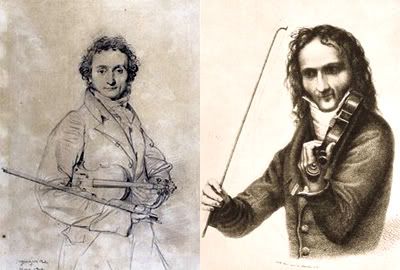
Nicolo Paganini was born in
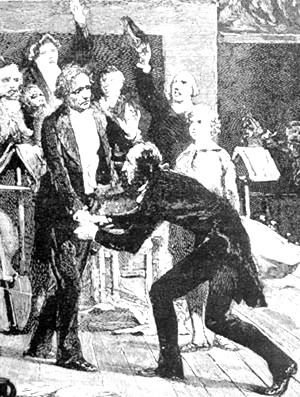
In early 1828 Nicolo began a six and half year tour that started in
His playing of tender passages was so beautiful that his audiences often burst into tears, and yet, he could perform with such force and velocity that at
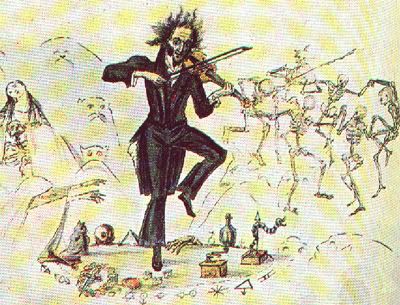
Paganini's signature violin, Il Cannone fabricated in 1742 by Giuseppe Antonio Guarnieri del Gesù, was his favourite. He named it "The Cannon" because of the powerful and explosive resonance he was able to produce from it. Its strings are nearly on the same plane, as opposed to most violins, the strings of which are distinctly arched to prevent accidentally bowing extra strings. The stringing of Il Cannone may have allowed Paganini to play on three or even four strings . Il Cannone is now in the hands of the City of Genoa, where it is exhibited in the town hall. It is taken out and played by its curator once monthly, and periodically loaned out to virtuosi of today.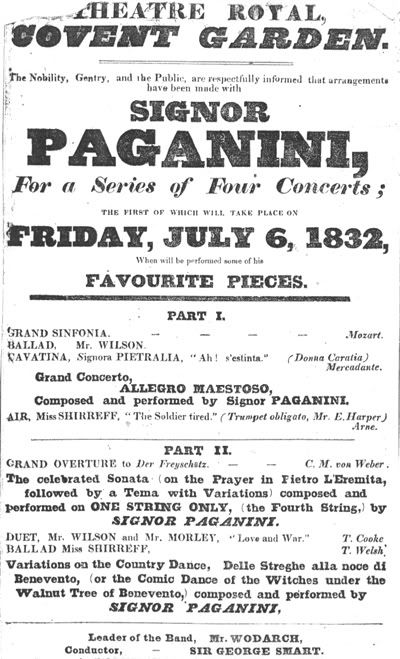
Once his fame was established, Paganini’s life was a mixture of triumphs and personal excesses. He earned large sums of money but he indulged recklessly in gambling and other forms of dissipation. On one occasion he was forced to pawn his violin. Having requested the loan of a violin from a wealthy French merchant so that he could fulfill an engagement, he was given a Guarnerius violin by the merchant and later refused to take it back when the concert was over. It was Paganini’s treasure and was bequeathed to the people of
Paganini’s genius as a player overshadows his work as a composer. He wrote much of his music for his own performances, music so difficult that it was commonly thought that he entered into a pack with the Devil. His compositions included 24 caprices (published in 1820) for unaccompanied violin that are among the most difficult works ever written for the instrument. He also challenged musicians with such compositions as his 12 sonatas for violin and guitar; 6 violin concerti; and 6 quartets for violin, viola, cello, and guitar.
According to Philip Sandblom in his book Creativity and Disease few geniuses have experienced such lucky agonies as Paganini, bedeviled by a host of chronic complaints, including Ehlers-Danlos syndrome, marked by excessive flexibility of the joints. “This enabled Paganini to perform the astonishing double-stoppings and roulades for which he was famous”, Sandblom writes. “His wrist was so loose that he could move and twist it in all directions. Although his hand was not disproportional he could thus double its reach and play in the first three positions without shifting.”
It is well known that Paganini rarely practiced after his 30th birthday. Those who were closely associated with him used to marvel at his brilliant technique and watched him closely to discover how he retained it.
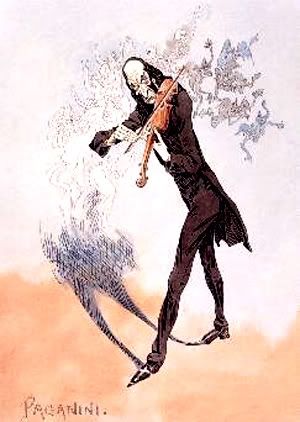
In performance Paganini enjoyed playing tricks, like tuning one of his strings a semitone high, or playing the majority of a piece on one string after breaking the other three. He astounded audiences with techniques that included harmonics, double stops, pizzicato with the left as well as the right hand, and near impossible fingerings and bowings.
Antonia Bianchi, a singer who toured with Nicolo in 1825, bore him a son, Cyrus Alexander on July 23, 1825. Although they were never married, he did lavish affection on his son for the rest of his life.
Known for years as an incorrigible womanizer and incurable gambler, he unsuccessfully attempted to open a gambling casino in
His health deteriorated due to mercury poisoning by the mercury compound used at that time to treat syphilis. The disease caused him to lose the ability to play violin, and he retired in ca.1834. He died of throat cancer in Nice on 27 May, 1840.
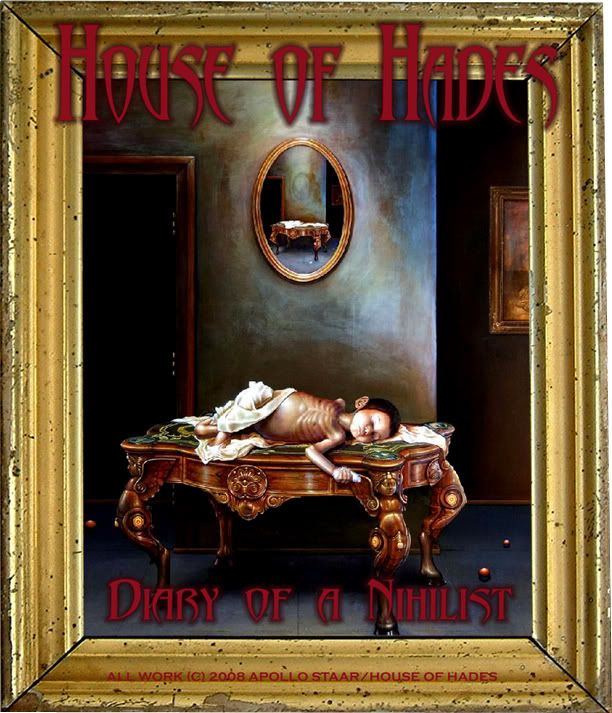 this blog is dedicated to showcasing obscure rare and transgressive film video literature art and people including interviews reviews observations and anything else that I consider noteworthy and/or unconstitutional and deemed sinful or immoral by any religious right. I welcome you to send me queries comments or criticisms. -A.S.
this blog is dedicated to showcasing obscure rare and transgressive film video literature art and people including interviews reviews observations and anything else that I consider noteworthy and/or unconstitutional and deemed sinful or immoral by any religious right. I welcome you to send me queries comments or criticisms. -A.S.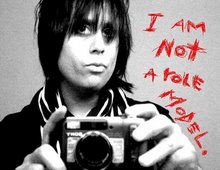

2 Comments:
Hi Hades from Paris,
Did you see Klaus Kinski's film about this violonist? He shot it in 1989 and it is a wonderful film.
Thanks for your blog, very interesting.
I tried to rent it at 20/20, but they didn't have it. I suppose I'll have to find it online. That will be very interesting to see Klaus Kinski, (the madman!)as Paganini!
Post a Comment
Subscribe to Post Comments [Atom]
<< Home